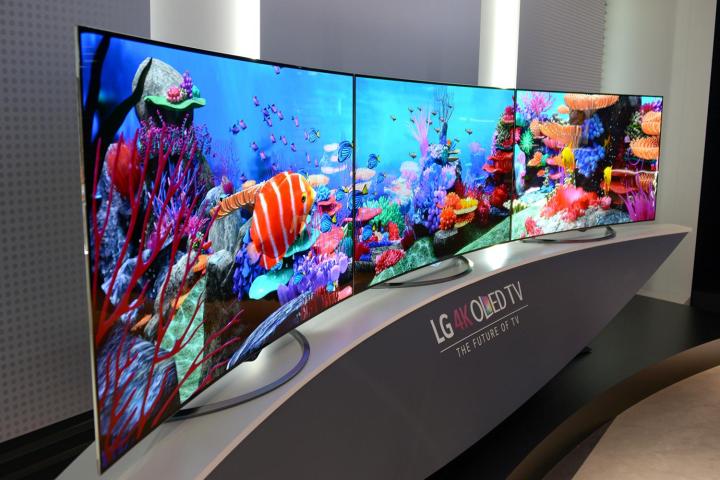
Related: LG prices 2014 4K/UHD LED TV lineup
Earlier this year, just a month prior to the IFA 2014 conference in Berlin, pricing information for LG’s 65-inch 4K OLED television was “leaked” by a reputable online publication, indicating the groundbreaking new set would come in at $9,000 retail, but sell for $7,000. Even some LG representatives at the show postulated to Digital Trends that figure might be in the right ballpark. However, LG quickly corrected the misinformation, sharing with us that pricing had not been finalized, and could come in a bit higher. Today’s release proves that to be the case, though street pricing for the 65-incher will likely land near $8,000 — not a far cry from the leaked figure.
It comes as little surprise that LG is asking a premium price for what is arguably one of the most premium televisions on the market. Just two years ago, producing a 55-inch OLED TV was considered a ground-breaking achievement — OLED panels have been notoriously difficult to produce. But then LG made a splash as CES 2014 announcing that not only had they developed a 4K/Ultra HD OLED, but had scaled the size up from 55-inches to 65- and 77-inches, indicating the manufacturer had overcome some significant production and scaling hurdles.
It’s important to note that both of these 4K OLED models are curved, not flat, but are wall-mountable nonetheless. It appears those pining for a flat OLED television will have to wait for CES 2015 to see if LG will answer the consumers’ call for a non-curved OLED TV option. Presently, LG offers only one flat OLED model, its 55EA8800 Gallery OLED. complete with picture frame-style embedded audio system — not exactly a good choice for the minimalist.
For those not familiar, OLED televisions are hailed for their incredible black levels, high contrast, rich color, and exceptionally thin panels. Because OLED displays are self-emitting (they produce their own light) they do not suffer from the same problems LCD-based LED televisions do, such as backlight bleeding at the edges, halos around bright objects against dark backgrounds, and limited viewing angles.
For an up-close look at both of the models covered here, check out our hands-on video from IFA 2014.



